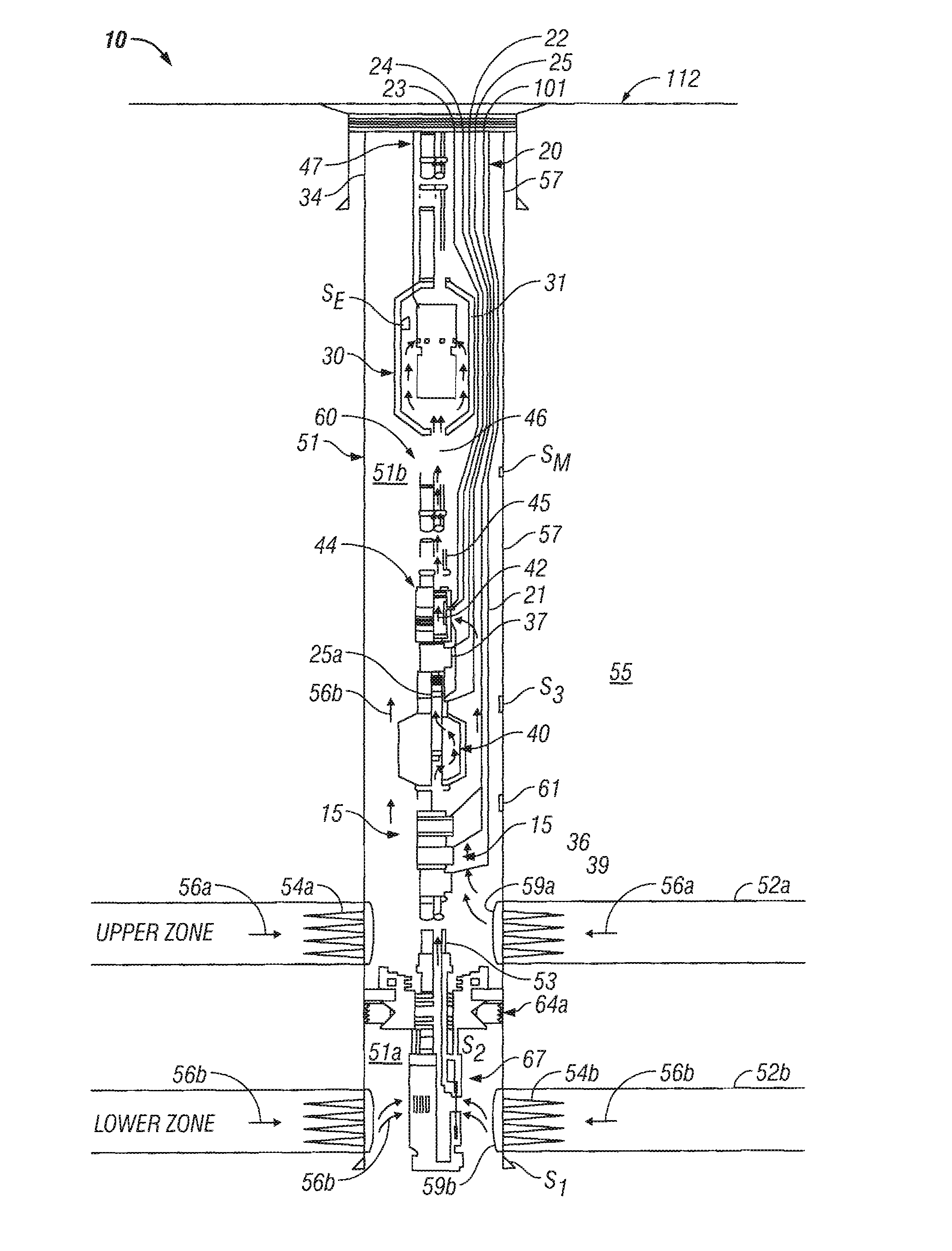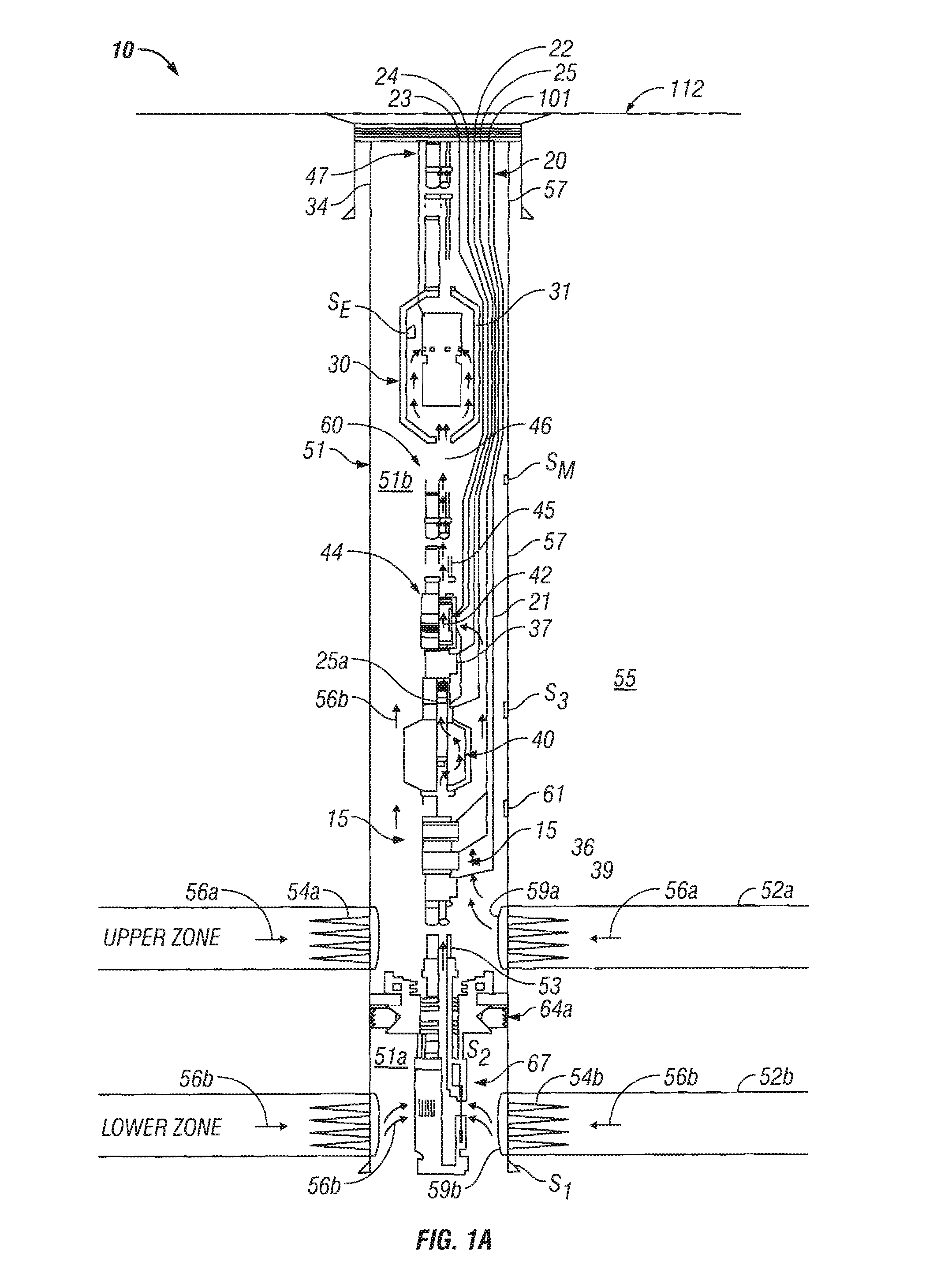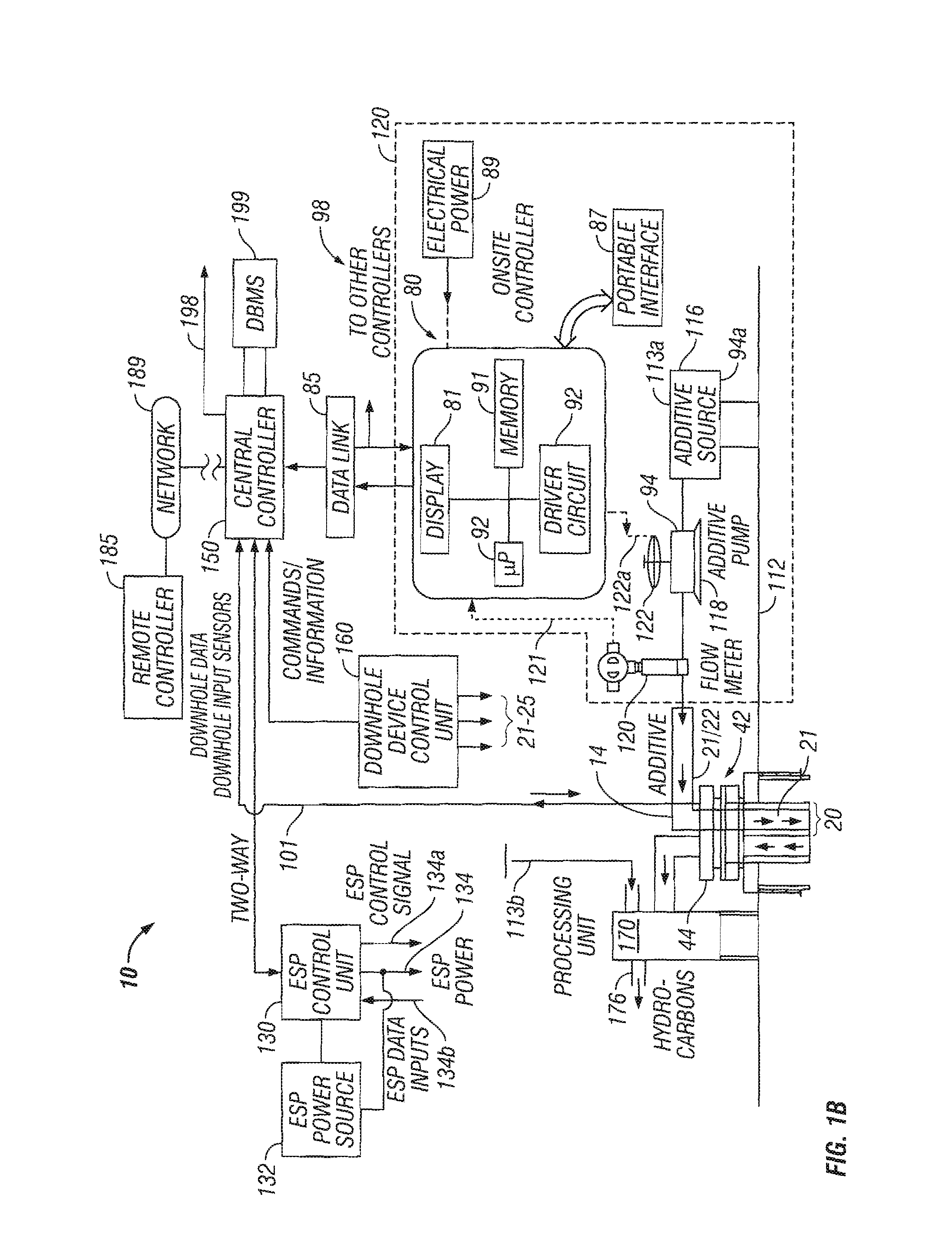Apparatus and Method for Managing Supply of Additive at Wellsites
- Summary
- Abstract
- Description
- Claims
- Application Information
AI Technical Summary
Benefits of technology
Problems solved by technology
Method used
Image
Examples
Embodiment Construction
[0017]FIGS. 1A and 1B collectively show a schematic diagram of a wellsite additive management system 10, according to one embodiment of the disclosure. FIG. 1A shows a production wellbore 50 that has been configured using exemplary equipment, devices and sensors that may be utilized to implement the concepts and methods described herein. FIG. 1B shows exemplary surface equipment, devices, controllers and sensors that may be utilized to manage the operation of various devices in the system 10, including the supply of the additives into the well and the surface equipment in response to the downhole conditions, surface conditions and according to programmed instruction, and / or a nodal analysis, use of a neural network or other algorithms. In one aspect, the system 10 manages the supply of the additives to one or more locations in the wellbore and in another aspect manages the supply of additives to the surface fluid treatment and processing units and the pipelines at the well site that...
PUM
 Login to View More
Login to View More Abstract
Description
Claims
Application Information
 Login to View More
Login to View More - R&D
- Intellectual Property
- Life Sciences
- Materials
- Tech Scout
- Unparalleled Data Quality
- Higher Quality Content
- 60% Fewer Hallucinations
Browse by: Latest US Patents, China's latest patents, Technical Efficacy Thesaurus, Application Domain, Technology Topic, Popular Technical Reports.
© 2025 PatSnap. All rights reserved.Legal|Privacy policy|Modern Slavery Act Transparency Statement|Sitemap|About US| Contact US: help@patsnap.com



